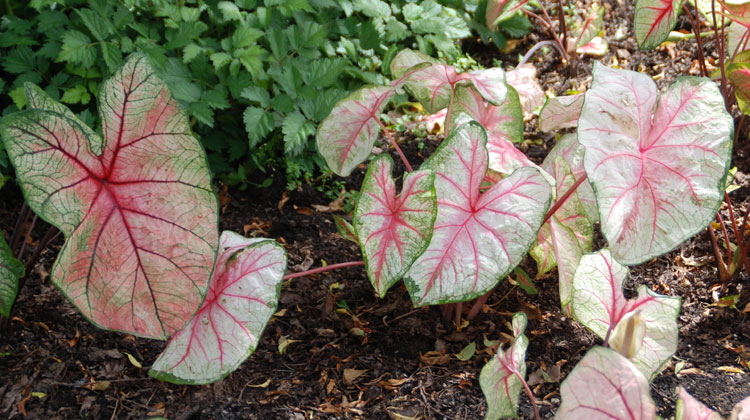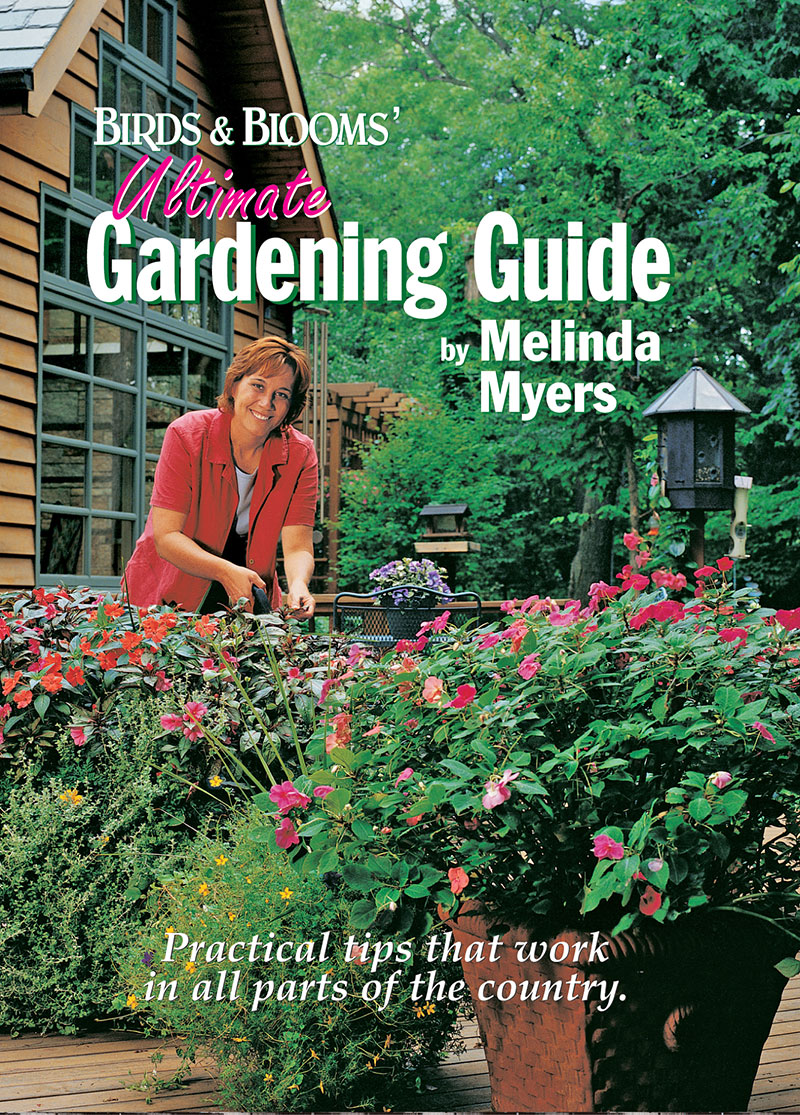
Colorful Caladiums Brighten Shade Gardens All Season
Tuck them into the garden, pop some in a container or dress up a window box. Then water as needed, add a bit of fertilizer and wait for the color explosion.
The showy heart-shaped leaves of caladiums come in combinations of pink, red, white and green. These heat-loving plants provide beautiful color all season long. Best of all, no deadheading is needed.
Caladiums can be used to create a stunning garden almost anywhere around your home. These tropical beauties grow well in full to partial shade, and some varieties grow equally well in full sun. Choose varieties that will provide the color, size and look you want to achieve, and that match the light conditions in your yard.
Compact caladiums, such as lime and dark pink Miss Muffet, grow about 12” tall and are perfect for lining a pathway, edging a flowerbed or dressing up a container. Florida Sweetheart’s bright, rose-pink leaves have ruffled green edges, and Gingerland has creamy white leaves that are decorated with splashes of green and red. All of these miniature varieties combine nicely with larger caladiums and elephant ears.
Step up the color impact with caladium Red Flash. This full-size caladium grows about 20” tall and has brilliant red centers, decorated with pink dots that pop against the large, deep green leaves. Use these anywhere you want a big splash of color in a garden bed or container.
Combine caladiums with shade-loving annuals like begonias, coleus, and mildew-resistant impatiens or other summer bulbs like cannas and elephant ears. Visit Longfield Gardens (longfield-gardens.com) for a bit of inspiration and container design ideas. You’ll find simple combinations that provide big impact on a deck, patio or entryway.
When planting caladiums directly into the garden, wait until at least two weeks after all danger of frost has passed. Nights should be warm, and the soil temperature should be at least 65 degrees F. Prepare the soil before planting. Add compost or other organic matter to improve drainage in clay soil and the moisture-holding ability in fast draining soils. Plant tubers about six inches apart and two inches below the soil surface. Water thoroughly and often enough to keep the soil moist, but not soggy.
Those gardening in cooler climates may want to start the tubers indoors for an earlier show outdoors. Plant indoors four to six weeks before moving them into the garden. Set the tubers near the surface of a shallow container filled with a well-drained potting mix. Grow them in a warm sunny spot indoors, keeping the soil barely moist. Move outdoors once the danger of frost has passed and the soil has warmed.
As the summer temperature rises, watch your caladiums shine while many other flowers fade in the summer heat and humidity. Continue to water as needed and fertilize throughout the summer to encourage new growth.
Those gardening in zones nine through eleven can leave their caladiums in place year-round. Others can either treat these colorful beauties as annuals or dig up the tubers and overwinter them indoors. Dig tubers in early fall when soil temperatures drop to 55 degrees. Spread them out in a warm, dry location for at least a week. Label each variety, remove the foliage and place tubers in a mesh bag or pack loosely in dry peat moss. Store in a cool, dark location at around 60 degrees.
Make this the year you add caladiums for beautiful splashes of color throughout your landscape all season long.
Related
Upcoming Live Events
& Webinars
April 27, 2024
Ridges & Rivers Book Festival
Viroqua, WI
Register now
April 28, 2024
Flowering Trees and Shrubs
Ebert's Greenhouse Village, Ixonia, WI
May 1, 2024
FREE WEBINAR
Ornamental Fruits and Vegetables
Register now
May 4, 2024
Garden U 2024
New Richmond, WI
Register now
May 9, 2024
FREE WEBINAR
How to Plant Your Rain Garden
Register now
May 11, 2024
Ask The Plant Doctor Q & A
Ebert's Greenhouse Village, Ixonia, WI
May 12, 2024
Ask The Plant Doctor Q & A
Ebert's Greenhouse Village, Ixonia, WI
May 18, 2024
Ask The Plant Doctor Q & A
Ebert's Greenhouse Village, Ixonia, WI
June 1, 2024
Selecting, Planting, Pruning and Caring for Hydrangeas
Ebert's Greenhouse Village, Ixonia, WI
June 5, 2024
FREE WEBINAR
Under-Appreciated Pollinators
Register now
WATCH ON-DEMAND WEBINARS
Learn More












